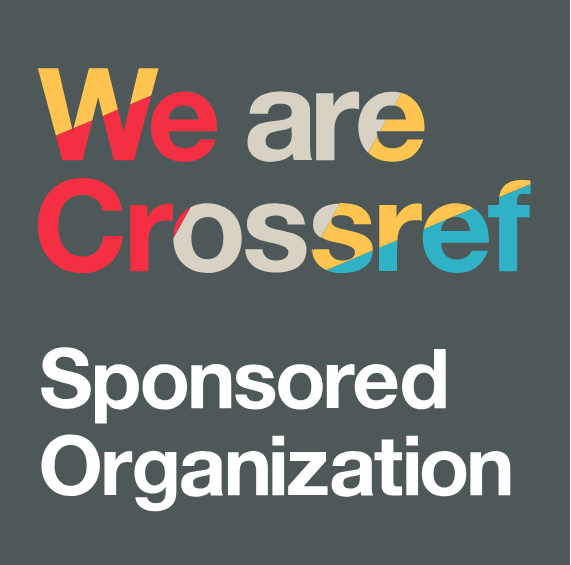Profit Shifting Through Transfer Pricing: A Systematic Review on Its Influence on Corporate Tax Aggressiveness
DOI:
https://doi.org/10.38035/jafm.v6i2.1962Keywords:
Transfer Pricing, Profit Shifting, Tax Aggressiveness, Multinational Companies, Systematic Literature ReviewAbstract
This article presents a systematic review of profit shifting practices through transfer pricing mechanisms and their impact on corporate tax aggressiveness. Transfer pricing, which involves setting prices for transactions between companies within a multinational business group, is often used to shift profits from high-tax jurisdictions to low-tax jurisdictions. This study uses the Systematic Literature Review (SLR) methodology. The results show that common strategies used include price manipulation of intangible assets, utilization of tax havens, thin capitalization, and price engineering of goods and services between group entities. Weak and non-standardized transfer pricing policies encourage increased corporate tax aggressiveness, especially in jurisdictions with limited fiscal oversight. On the other hand, the effectiveness of tax authorities in controlling profit shifting practices is greatly influenced by institutional capacity, cross-country data transparency, and international tax policy harmonization. These findings emphasize the importance of reforming global tax policies that are fairer, more transparent, and more integrated. This study is expected to provide theoretical and practical contributions for policymakers in formulating effective transfer pricing regulations to combat tax avoidance by multinational companies.
References
Aisyah, P., Adib, N., & Rahmanti, V. N. (2024). Does transfer pricing, sales growth and capital intensity affect tax aggressiveness? Jurnal Reviu Akuntansi dan Keuangan.
Beer, S., de Mooij, R., & Liu, L. (2020). International corporate tax avoidance: A review of the channels, magnitudes, and blind spots. Journal of Economic Surveys, 34(3), 660–688.
Chen, X. (2024). The global minimum tax, investment incentives and asymmetric tax competition. arXiv. https://doi.org/10.48550/arXiv.2409.05397
Cobham, A., & Janský, P. (2019). Global distribution of revenue loss from corporate tax avoidance: Re-estimation and country results. Journal of International Development, 31(2), 206–232.
Denyer, D., & Tranfield, D. (2009). Menghasilkan tinjauan sistematis. Dalam D. A. Buchanan & A. Bryman (Eds.), Buku panduan Sage tentang metode penelitian organisasi (hal. 671-689). Sage Publications Ltd.
Dyreng, S. D., Hanlon, M., & Maydew, E. L. (2008). Long-run corporate tax avoidance. The Accounting Review, 83(1), 61–82.
Farooq, R., & Chisti, K. A. (2023). Transfer pricing intensity and its determinants before and during COVID-19: Evidence from Indian MNCs. International Journal of Accounting and Finance.
Garcia-Bernardo, J., & Janský, P. (2022). Profit shifting of multinational corporations worldwide. arXiv. https://doi.org/10.48550/arXiv.2201.08444
Grubert, H., & Mutti, J. (2007). The effect of taxes on royalties and the migration of intangible assets abroad. In National Tax Journal, 60(1), 111–133.
Hanlon, M., & Heitzman, S. (2010). A review of tax research. Journal of Accounting and Economics, 50(2-3), 127–178.
Jacob, J. (2020). Taxes and transfer pricing: Income shifting and the volume of intrafirm transfers. Journal of Accounting Research.
Janssen, M., & Estevez, E. (2024). Institutional complexity in digital government: Understanding fragmentation and coherence. Government Information Quarterly, 41(1), 101801.
Jensen, M. C., & Meckling, W. H. (2020). Theory of the firm: Managerial behavior, agency costs and ownership structure. Journal of Financial Economics.
Johannesen, N., & Zucman, G. (2016). The end of bank secrecy? An evaluation of the G20 tax haven crackdown. American Economic Journal: Economic Policy, 8(1), 65–91.
Kato, H., & Okoshi, H. (2022). Economic integration and agglomeration of multinational production with transfer pricing. arXiv. https://doi.org/10.48550/arXiv.2201.02919
Lubis, A. F., & Wenten, I. K. (2024). The effect of firm size and transfer pricing on tax aggressiveness with institutional ownership as a moderating variable. Educoretax.
Manoppo, INA, & Susanti, M. (2022). The effect of transfer pricing on tax aggressiveness of food and beverage companies listed on the IDX. Journal of Accounting, Finance, Taxation and Corporate Governance , 1(4), 442–455.
Mayangsari, S. R., Rusydi, M. K., & Amirya, M. (2022). ESG disclosure: Moderating thin capitalization, transfer pricing and tax aggressiveness. Jurnal Reviu Akuntansi dan Keuangan.
Mayangsari, S. R., Rusydi, M. K., & Amirya, M. (2024). ESG disclosure: Moderating thin capitalization, transfer pricing and tax aggressiveness. Jurnal Reviu Akuntansi dan Keuangan.
Minnick, K., & Noga, T. (2010). Do corporate governance characteristics influence tax management? Journal of Corporate Finance, 16(5), 703–718.
OECD. (2022). Addressing the Tax Challenges of the Digital Economy . OECD/G20 Base Erosion and Profit Shifting Project.
OECD. (2022). OECD Transfer Pricing Guidelines for Multinational Enterprises and Tax Administrations . OECD Publishing.
Pamungkas, I. D., Nehayati, N., & Ahmad, N. (2024). Optimizing transfer pricing in Indonesia: An exploring of tax minimization, tunneling incentive, and audit committees. Sriwijaya International Journal of Dynamic Economics and Business.
Pramudito, R., & Nuryanah, S. (2023). The effect of diversification strategy on corporate tax aggressiveness with board effectiveness as the moderating variable. SAGE Open. https://doi.org/10.1177/21582440231189169
Puspita, A. F., & Ramadhanty, N. F. (2024). Pengaruh transfer pricing dan manajemen laba terhadap agresivitas pajak. Telaah Ilmiah Akuntansi dan Perpajakan.
Rathke, A. A. T. (2022). Profit shifting under the arm's length principle. arXiv. https://doi.org/10.48550/arXiv.2309.13449
Rathke, A. A. T. (2022). Transfer pricing manipulation, tax penalty cost and the impact of foreign profit taxation. arXiv. https://doi.org/10.48550/arXiv.1508.03853
Richardson, G., Taylor, G., & Lanis, R. (2013). The impact of board of director oversight characteristics on corporate tax aggressiveness: An empirical analysis . Journal of Accounting and Public Policy, 32(3), 68–88.
Ruknan, R., Khair, O. I., & Diraga, M. G. (2024). The effects of transfer pricing, thin capitalization, firm size, and tax haven country utilization on tax aggressiveness. International Journal of Economics, Business and Accounting Research (IJEBAR).
Sari, D. K., Siregar, S. V., Martani, D., & Wondabio, L. S. (2023). The effect of audit quality on transfer pricing aggressiveness and firm risk: Evidence from Southeast Asian countries. Cogent Business and Management. https://doi.org/10.1080/23311975.2023.2224151
Sebele-Mpofu, F., Mashiri, E., & Schwartz, S. C. (2021). An exposition of transfer pricing motives, strategies and their implementation in tax avoidance by MNEs in developing countries. Cogent Business and Management. https://doi.org/10.1080/23311975.2021.1944007
Shackelford, D. A., Slemrod, J. B., & Sallee, J. (2020). A unifying model of how the tax system and generally accepted accounting principles affect corporate behavior. SSRN Electronic Journal. https://doi.org/10.2139/ssrn.958436
Siddaway, A.P., Wood, A.M., & Hedges, L.V. (2018). How to do a systematic review: A best practice guide to conducting and reporting narrative reviews, meta-analyses, and meta-syntheses. Annual Review of Psychology, 70, 747–770. https://doi.org/10.1146/annurev-psych-010418-102803
Soepriyanto, A., Sari, RM, & Hidayat, A. (2019). The effect of tax amnesty policy on transfer pricing in multinational companies. Journal of Accounting and Taxation , 19(2), 123–135.
Suldina, G., Sulyagina, J., Eroshkin, S., & Sorokina, A. (2020). Specifics of global governance in transnational transport corporations. IOP Conference Series: Materials Science and Engineering.
Supriyati, S., Murdiawti, D., & Pranetha Prananjaya, K. (2021). Determinants of transfer pricing decision at manufacturing companies of Indonesia. International Journal of Research in Business and Social Science.
Supriyati, S., Murdiawti, D., & Pranetha, K. (2020). Determinants of transfer pricing decision at manufacturing companies of Indonesia. International Journal of Research in Business and Social Science.
Taji, P. C. S., & Palupi, A. (2022). The effect of transfer pricing and other factors on tax aggressiveness. Journal of Islamic Contemporary Accounting and Business.
Taylor, G., Richardson, G., & Al-Hadi, A. (2020). Uncertain tax benefits, international tax risk, and audit specialization: Evidence from US multinational firms. International Journal of Auditing.
Taylor, G., Richardson, G., & Lanis, R. (2015). Multinationality, tax havens, intangible assets, and transfer pricing aggressiveness: An empirical analysis. Journal of International Accounting Research, 14(1), 25–57.
Taylor, G., Richardson, G., & Lanis, R. (2020). Multinationality, tax havens, intangible assets, and transfer pricing aggressiveness: An empirical analysis. Journal of International Accounting Research.
Zucman, G. (2014). Tax evasion on offshore profits and wealth. Journal of Economic Perspectives, 28(4), 121–148.
Zucman, G. (2014). The missing wealth of nations: Are Europe and the U.S. net debtors or net creditors? The Quarterly Journal of Economics, 129(1), 1–37.
Downloads
Published
How to Cite
Issue
Section
License
Copyright (c) 2025 Mediaty Mediaty, Asri Usman, Muhammad Ashar, Fitriani Fitriani

This work is licensed under a Creative Commons Attribution 4.0 International License.
Authors who publish their manuscripts in this journal agree to the following conditions:
- The copyright on each article belongs to the author(s).
- The author acknowledges that the Journal of Accounting and Finance Management (JAFM) has the right to be the first to publish with a Creative Commons Attribution 4.0 International license (Attribution 4.0 International (CC BY 4.0).
- Authors can submit articles separately, arrange for the non-exclusive distribution of manuscripts that have been published in this journal into other versions (e.g., sent to the author's institutional repository, publication into books, etc.), by acknowledging that the manuscript has been published for the first time in the Journal of Accounting and Finance Management (JAFM).



























